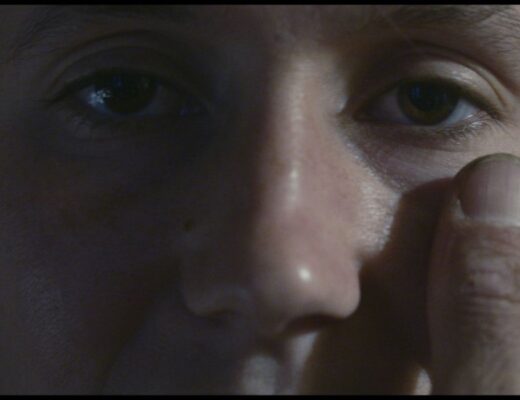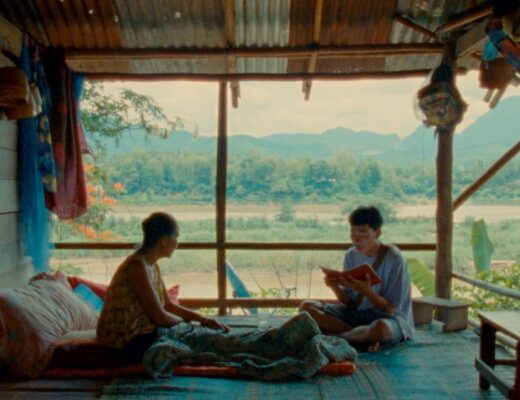Filmmakers Anja Dornieden and Juan David González Monroy, who consider themselves purveyors of “expanded cinema” — a loose, catch-all term for video and performance art that has been in use at least since Gene Youngblood’s seminal 1970 book of the same name — have been making experimental films and videos together under the moniker Ojoboca since 2010. In their new, feature-length film Her Name Was Europa, this manifests as a proclivity for performative gestures, foregrounded filming procedures, and a multi-media approach to imagemaking. The directors have constructed their film as a sort of old-fashioned, proto-Power Point presentation. (Readers of a certain age might recall the ubiquitous presence of overhead projectors back in grammar school, as teachers would lay thin pieces of clear acetate on a glass surface that then projected onto a screen for the class to follow along.) So, then, Her Name Was Europa might be considered a pedagogical exercise, except that it quickly becomes much more than that. Ostensibly interested in aurochs, extinct bovines that are the ancestors of modern cattle, the film begins with a title card, typed out and placed by hand into a 16mm camera’s frame: “Lutz Heck and his brother Heinz were directors respectively, of the Berlin and Munich Zoos. Starting in the 1920s, they began a project to bring back from extinction the ancestor of modern cattle, the aurochs.” This first leads to a detour in Nazi history, as Lutz befriended Hermann Göring and worked with the SS to create an “Aryan wilderness” where they could hunt big, pure-blood game, before segueing into an exploration of different versions of a wildlife book Lutz published that provides images that will recur throughout the film. The thread later picks up again in the Netherlands, in 2009, as an entirely different project attempts to breed a new, near-perfect copy of the aurochs. Mostly proceeding along these lines, the filmmakers use hand placed intertitles to convey information, interspersed with black-and-white 16mm footage of cattle, landscapes, and assorted artists and scientists hard at work. It seems, on the face of it, patently absurd, all this effort to genetically reverse-engineer a type of cow. But Dornieden and Monroy have a downright Cubist sensibility — not aesthetically but conceptually. They are determined to look at this particular subject from every conceivable angle and follow any and all threads that they might stumble across.
The film is also very much about the process of its own creation, with an emphasis on labor and a tactile, handcrafted quality to the images that emphasizes the material aspects of filmmaking. At one point, the filmmakers explain that they had problems with some footage, so they returned and reshot scenes on a different film stock. They then show bits of both footage as a kind of compare and contrast, before then superimposing multiple images from different film stocks. Later, they describe an abandoned fictional ending that they grew bored with, although they spend some time exploring the real location they had decided to shoot in. The film snaps into place when it interviews artist Marleen Felius, who writes and illustrates books about bovines. As she sketches a hypothetical version of the auroch, she pontificates on history and science as a kind of storytelling, one infused with the personality of whoever is telling it. For instance, modern scientists are basing their conception on the auroch in part on firsthand accounts of hunters who might have seen them. As Felius explains, these accounts would have had the incentive to exaggerate both the size and disposition of these creatures so as to inflate their own prowess as big-game hunters. Dornieden and Monroy have been described as “futurist anthropologists,” exploring the past through the lens of an avant-garde approach to imagemaking. Her Name Was Europa is an invigorating attempt at linking past, present, and future in an ongoing formal conversation, infused with a wry, absurdist sense of humor that belies the film’s rigorous structural methodology.
Published as part of NYFF 2020 — Dispatch 3.







